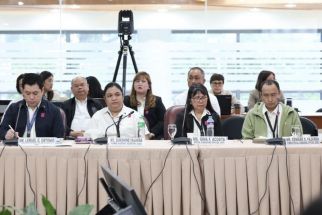Negotiable justice

How do you resolve a case of he said, she said?
Finding signed letters or other incriminating documents are unlikely. In this country, only Joseph Estrada signs a false name on a bank document in the presence of a witness.
A video or tape recording might have been taken surreptitiously by one party who intended to use the recorded information someday. But such evidence is inadmissible in court, though it could be a hit on YouTube. Another way is through the testimony of an eavesdropper – a waiter, perhaps, or a bodyguard.
There are no such testimonies or evidence in the case of the exchange of accusations between Court of Appeals Associate Justice Jose Sabio and businessman Francis Roa de Borja.
Sabio, livid with indignation that his integrity has been questioned, has challenged his accuser to take a lie detector test. But the test is unreliable, like paraffin testing.
The Supreme Court faces the daunting task of ferreting out the truth in the case of Sabio, who started out accusing a businessman, initially unnamed, of offering him a P10-million bribe, only to find the businessman turning the tables on him and accusing him of quoting a much higher figure of P50 million.
Even more daunting for the Supreme Court is restoring the tattered image of the judiciary.
Some quarters have come out in defense of the integrity of Sabio. But the more common reaction to the accusations and counter-accusations, plus the denials all around, in this sordid affair is that, at best, Sabio opened his mouth because he suspected that he got cut out of a lucrative deal. In Pinoy slang, na-didal.
It doesn’t speak well of the judiciary that when De Borja blabbed about the P50 million, the joke that went around was that with more than 60 other CA justices who needed paying off, P50 million was immoderate greed, and Sabio priced himself out of the deal.
How to counter this public cynicism over the integrity and independence of the judiciary is the Herculean task now facing the Supreme Court.
* * *
In this controversy, the line between hero and heel is blurry, though Sabio would want to picture himself as the whistle-blowing knight in shining armor out to slay the corrupt.
Filipinos have long suspected that justice is negotiable in this country, with restraining orders and decisions being sold for money, promotion by Malacañang, or a sinecure for a prominent justice’s relative in a hotshot litigant’s company.
Even the Supreme Court has not been spared. Some years back, the tribunal came under fire for issuing temporary restraining orders (TROs) that were anything but temporary.
In a country where jumping to conclusions has been made necessary by the weakness of the judicial system, it is easy for Filipinos to believe accusations of bribery especially when the case involves a controversial firm such as the Manila Electric Co.
The Lopez clan, which controls Meralco, is constantly fighting off accusations that it uses its power, money and media clout to influence national policy-making and favor its businesses.
Similar accusations can in fact be hurled against several other business empires, which are owned by the tiny fraction of the population that controls the bulk of the country’s wealth.
A number of them are also suspected of bribing public officials to favor their businesses. Some of the wealthiest individuals are cronies of the administration and use their money and influence to the hilt.
In the scandal now rocking the CA, there are people who believe the accuser and accused – plus all the other players in the case – deserve each other.
* * *
Suspicions of corruption in the judiciary are not new. Joseph Estrada famously declared war on “hoodlums in robes” and “fix-cals,” to the applause of his fans and the skepticism of detractors. The skeptics turned out to be right; Estrada himself was eventually deposed and convicted of large-scale corruption.
But most of the hoodlums in robes Estrada had targeted were trial court judges – people who issued TROs for a fee, or who approved bail for drug dealers facing non-bailable offenses, allowing the accused to flee the country for good.
The CA is just a heartbeat away from the Supreme Court. In recent years the CA has been tasked to ease the workload of the high tribunal, with additional cases no longer requiring elevation to the SC for review.
When the entire appellate court becomes enmeshed in a bribery scandal, the inevitable question is how high up the rot in the judiciary goes.
In resolving the CA scandal, which should be done quickly, the nation’s highest tribunal should see to it that it does not become tainted with the rot that is gnawing away at the foundations of the judiciary.
Some legal professionals have expressed deep concern that with every institution in this country corrupted under this administration, only the SC is left standing, and it is now in the crosshairs of the corruptors.
The recent SC ruling on executive privilege, which effectively allowed criminals to take refuge behind diplomatic privilege, triggered the concern. Similar rulings may be expected as several SC justices retire before 2010.
What do Filipinos do when their court of last resort fails them? Many will simply join the millions who have already left the country. Others will stay, and no one can tell what desperation can drive people to do.
For now that desperation has not taken shape. The Supreme Court still offers hope of bringing integrity to a tarnished judiciary. It should not disappoint the public.
- Latest
- Trending




























